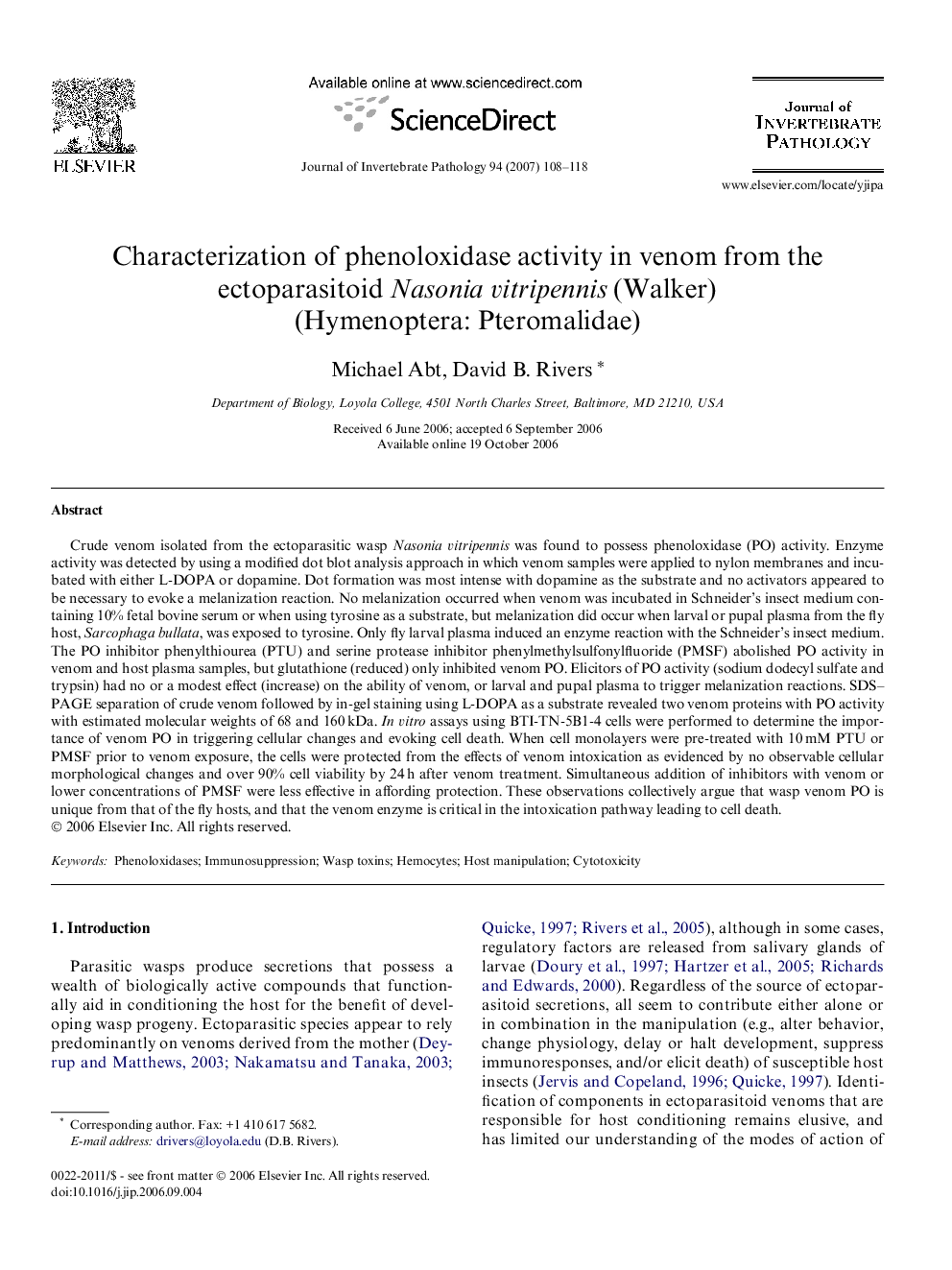| Article ID | Journal | Published Year | Pages | File Type |
|---|---|---|---|---|
| 4558824 | Journal of Invertebrate Pathology | 2007 | 11 Pages |
Abstract
Crude venom isolated from the ectoparasitic wasp Nasonia vitripennis was found to possess phenoloxidase (PO) activity. Enzyme activity was detected by using a modified dot blot analysis approach in which venom samples were applied to nylon membranes and incubated with either l-DOPA or dopamine. Dot formation was most intense with dopamine as the substrate and no activators appeared to be necessary to evoke a melanization reaction. No melanization occurred when venom was incubated in Schneider's insect medium containing 10% fetal bovine serum or when using tyrosine as a substrate, but melanization did occur when larval or pupal plasma from the fly host, Sarcophaga bullata, was exposed to tyrosine. Only fly larval plasma induced an enzyme reaction with the Schneider's insect medium. The PO inhibitor phenylthiourea (PTU) and serine protease inhibitor phenylmethylsulfonylfluoride (PMSF) abolished PO activity in venom and host plasma samples, but glutathione (reduced) only inhibited venom PO. Elicitors of PO activity (sodium dodecyl sulfate and trypsin) had no or a modest effect (increase) on the ability of venom, or larval and pupal plasma to trigger melanization reactions. SDS-PAGE separation of crude venom followed by in-gel staining using l-DOPA as a substrate revealed two venom proteins with PO activity with estimated molecular weights of 68 and 160Â kDa. In vitro assays using BTI-TN-5B1-4 cells were performed to determine the importance of venom PO in triggering cellular changes and evoking cell death. When cell monolayers were pre-treated with 10Â mM PTU or PMSF prior to venom exposure, the cells were protected from the effects of venom intoxication as evidenced by no observable cellular morphological changes and over 90% cell viability by 24Â h after venom treatment. Simultaneous addition of inhibitors with venom or lower concentrations of PMSF were less effective in affording protection. These observations collectively argue that wasp venom PO is unique from that of the fly hosts, and that the venom enzyme is critical in the intoxication pathway leading to cell death.
Related Topics
Life Sciences
Agricultural and Biological Sciences
Ecology, Evolution, Behavior and Systematics
Authors
Michael Abt, David B. Rivers,
